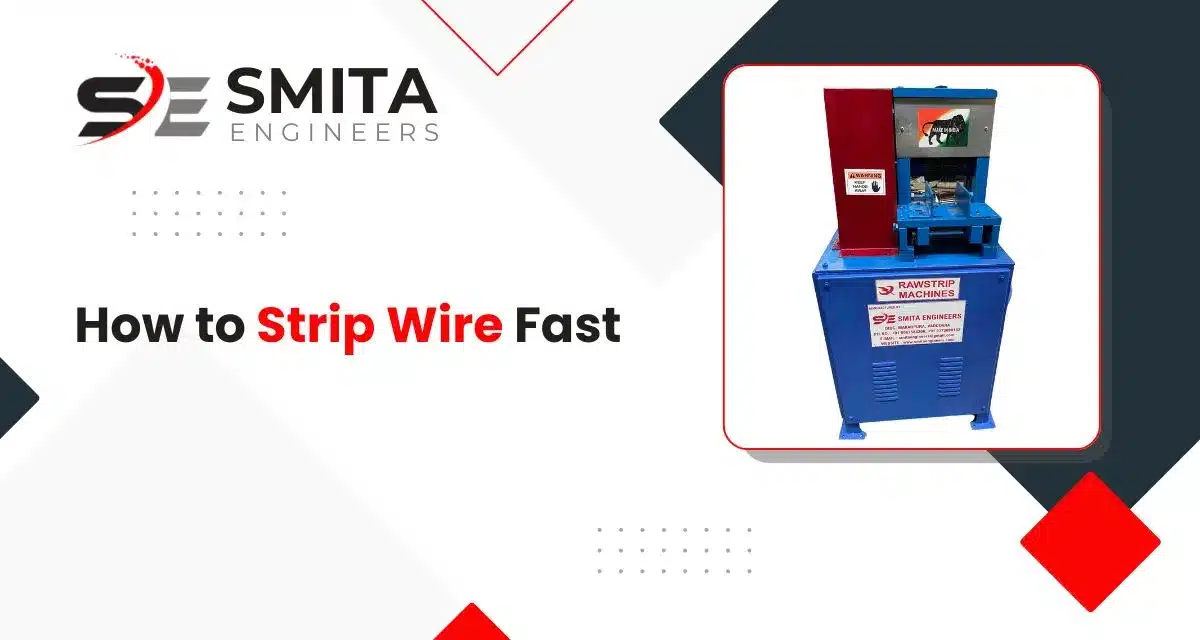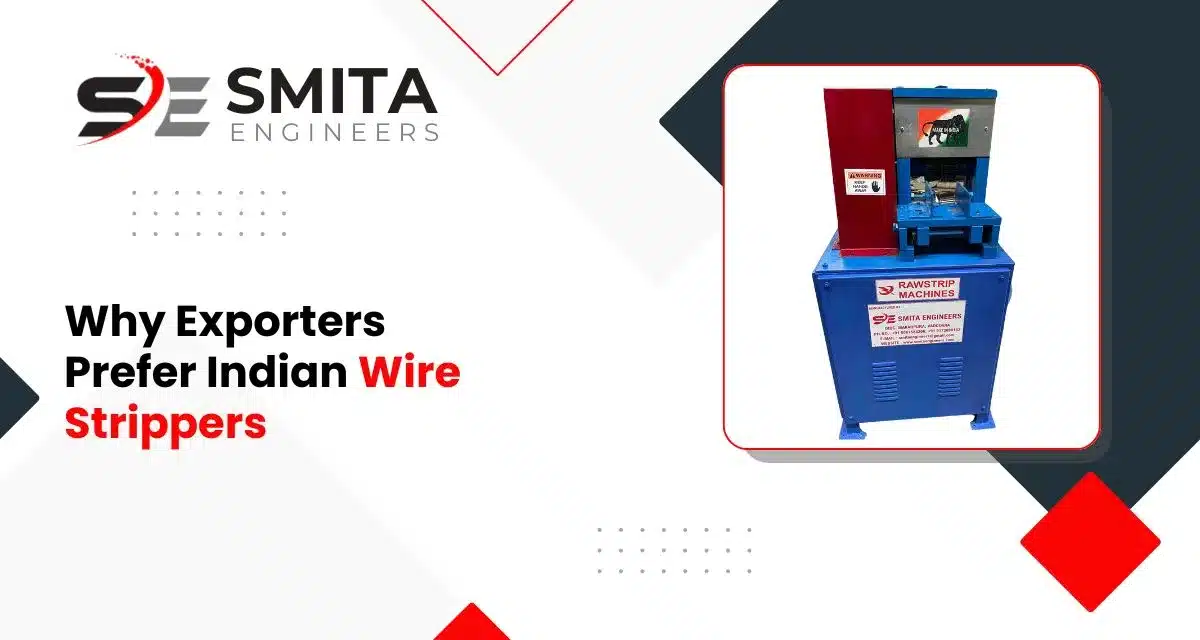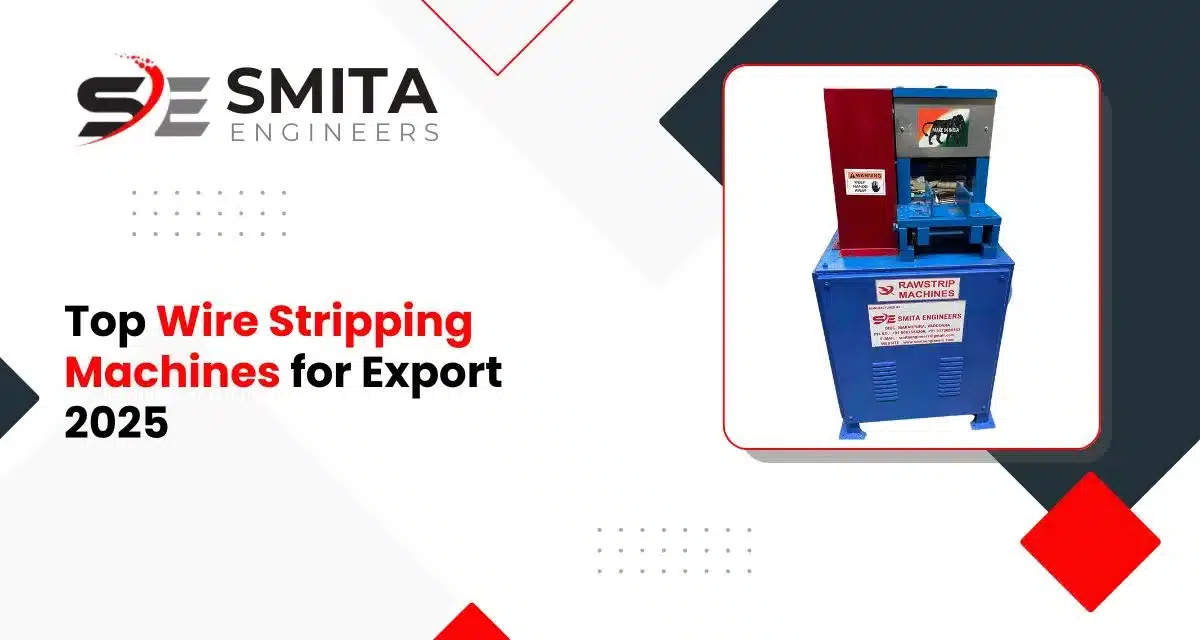Wire strippers are indispensable tools in electrical, electronics, and recycling industries. Whether you're managing a…

Stripping wire is a fundamental skill in electrical work, whether you’re installing outlets, making repairs, or working on a project like wiring a light fixture. With the right tools and technique, you can strip wire quickly and efficiently. In this guide, we will walk through various methods, tools, and tips to strip wire fast, including a breakdown of the best wire-stripping techniques.
Why Wire Stripping is Important
Wire stripping removes the insulation from electrical wire, allowing you to make proper connections with terminals, outlets, or electrical devices. It ensures the copper or aluminium wire is exposed and ready for secure contact with other parts of a circuit. Proper wire stripping is critical for safety, efficiency, and maintaining optimal electrical conductivity.
Key Points:
- Ensures proper electrical conductivity.
- Prevents overheating due to poor connections.
- Protects from short circuits caused by improper stripping.
Essential Tools for Stripping Wire
The right tools can make a world of difference in how fast and efficiently you strip wire. Below is a list of tools that will help:
| Tool | Description |
| Wire Strippers | The most common tool, comes with adjustable settings for various wire gauges. |
| Utility Knife | A quick solution for stripping thicker wires but requires careful handling. |
| Diagonal Cutters | Ideal for cutting wires but can be used for stripping in a pinch. |
| Wire Stripping Machine | Best for high-volume stripping in a professional setting. |
Step-by-Step Guide for Stripping Wire
The method you use for stripping wire will depend on the tools you have. Below are the basic steps to follow when using wire strippers:
Step 1: Measure the Insulation
Before you start, measure how much insulation you need to remove. Typically, about 1 to 2 inches of wire needs to be stripped for most connections.
Step 2: Position the Wire Stripper
Place the wire inside the wire stripper, aligning the gauge of the wire with the correct notch on the stripper.
Step 3: Cut and Pull the Insulation
Squeeze the handles of the wire stripper to make a clean cut around the insulation. Then, gently pull the stripper away from the wire, leaving the copper exposed.
Step 4: Inspect the Wire
Check that the wire is cleanly stripped, without damaging the underlying copper. Any nicks or cuts in the wire can lead to poor electrical conductivity or safety issues.
Tips to Speed Up the Process
If you’re working on a large project or want to strip wire quickly, consider the following tips:
- Choose the Right Wire Stripper: A tool that is adjustable to different gauges will save time and effort. Invest in high-quality wire strippers that fit the wire you are using.
- Use a Wire Stripping Machine: For heavy-duty projects, a wire stripping machine can handle bulk wire stripping efficiently and at high speeds.
- Prep the Wires in Batches: Instead of stripping each wire individually, gather all wires and strip them in one go. This method reduces setup time.
- Keep a Steady Hand: Practice your technique so you can strip wires quickly without making mistakes.
Ready to strip wires like a pro? Contact us for expert tips and tools that will make your wire stripping process faster and easier!
Common Mistakes to Avoid
Mistakes during wire stripping can lead to damaged wires, electrical hazards, or wasted time. Avoid these common issues:
- Over-Striping: Don’t strip more insulation than necessary. Excessive stripping can expose too much wire and cause short circuits.
- Under-Striping: Insufficient stripping will result in poor connections and unreliable performance.
- Cutting the Wire: Always make sure to only strip the insulation. Cutting the wire will ruin it.
- Not Checking the Wire Gauge: Using the wrong notch on your stripper for the wire gauge can lead to improper stripping and potential damage.
Types of Wire and Their Stripping Needs
Different types of wires require different approaches to stripping. Understanding the wire type will help you choose the best method:
- Single Strand Wire: Single strand wires are easy to strip with wire strippers because they don’t bend or fray.
- Multi-Strand Wire: These wires consist of many thin strands of copper and require more precision when stripping. Too much force can cause the strands to break.
- Heavy Duty Wire: For thicker or heavier wires, like those used in electrical panels, use a utility knife or wire stripping machine to handle the extra thickness.
Frequently Asked Questions
What is the easiest way to strip wires?
Using an automatic wire stripper is the easiest way to strip wires, as it adjusts to wire sizes and removes insulation in one step.
What is the fastest way to clean copper wire?
The fastest way to clean copper wire is by using a wire brush or sandpaper to remove oxidation and impurities quickly.
What is the best practice to take when stripping wires?
Always choose the correct tool for the wire size, inspect for damage, and adjust the tool settings to prevent cutting into the conductor.
Conclusion
Wire stripping is an essential skill in both DIY and professional electrical work. By using the right tools, understanding the best techniques, and avoiding common mistakes, you can strip wire quickly and effectively. Whether you’re working with single-strand, multi-strand, or heavy-duty wire, the key is to practice and ensure safety while doing the job.




